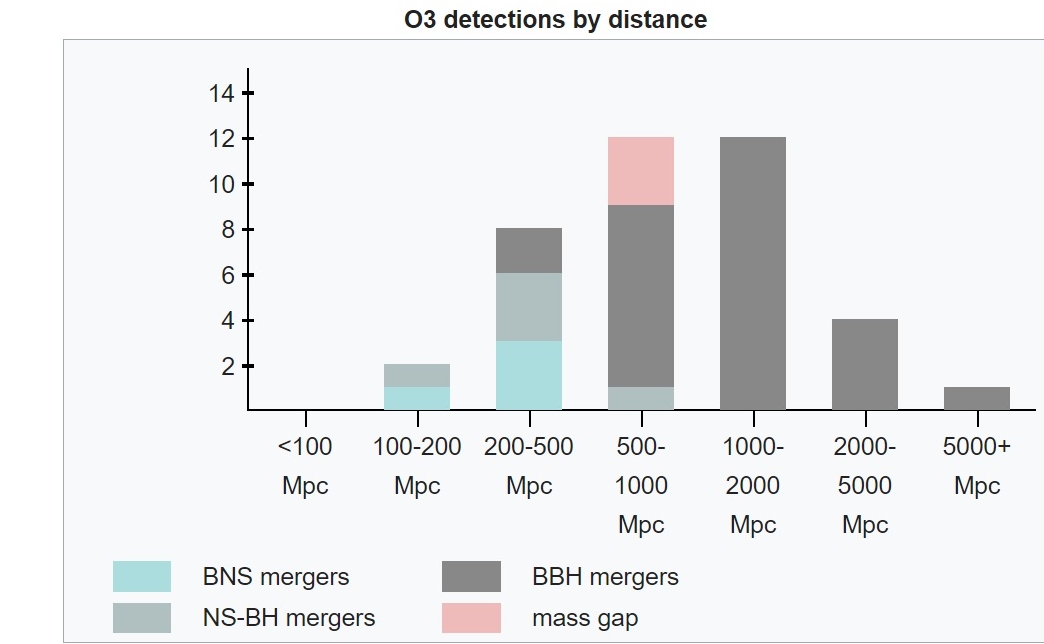In spite of the addition of Virgo, and the ability to better triangulate signals, and in spite of the significant sensitivity enhancements made to all of the GW detectors, not a single new example of multimessenger astronomy has been realized during the 03 run of LIGO. That's rather disappointing and rather telling IMO. What's more telling IMO is the fact that the LIGO app shows that a significant portion of the supposed gravitational wave signals from 03 have resulted in retractions, including another one today with a FAR of 1 in 118+ *thousand* years!
It sure seems like LIGO has painted themselves into same scientific corner that Joseph Weber painted himself into. Not only must we now believe that most if not all black hole mergers *never* result in visible emissions that are powerful enough to been seen by telescopes on Earth, but even most neutron star mergers don't generate enough light to be picked out by telescopes on Earth, even with better triangulation of the signal.
It seems to me that if LIGO's methodology was scientifically sound, they should be capable of duplicating their one example of multimessenger astronomy. As statistically unlikely as it might be that LIGO just got "lucky" in 2017, it's not statistically impossible. It's pretty disappointing IMO that even after many months of the O3 run using upgraded equipment, LIGO still has yet to demonstrate that their supposed GW waves signals are actually caused by celestial processes rather than originating from terrestrial sources.
It sure seems like LIGO has painted themselves into same scientific corner that Joseph Weber painted himself into. Not only must we now believe that most if not all black hole mergers *never* result in visible emissions that are powerful enough to been seen by telescopes on Earth, but even most neutron star mergers don't generate enough light to be picked out by telescopes on Earth, even with better triangulation of the signal.
It seems to me that if LIGO's methodology was scientifically sound, they should be capable of duplicating their one example of multimessenger astronomy. As statistically unlikely as it might be that LIGO just got "lucky" in 2017, it's not statistically impossible. It's pretty disappointing IMO that even after many months of the O3 run using upgraded equipment, LIGO still has yet to demonstrate that their supposed GW waves signals are actually caused by celestial processes rather than originating from terrestrial sources.


